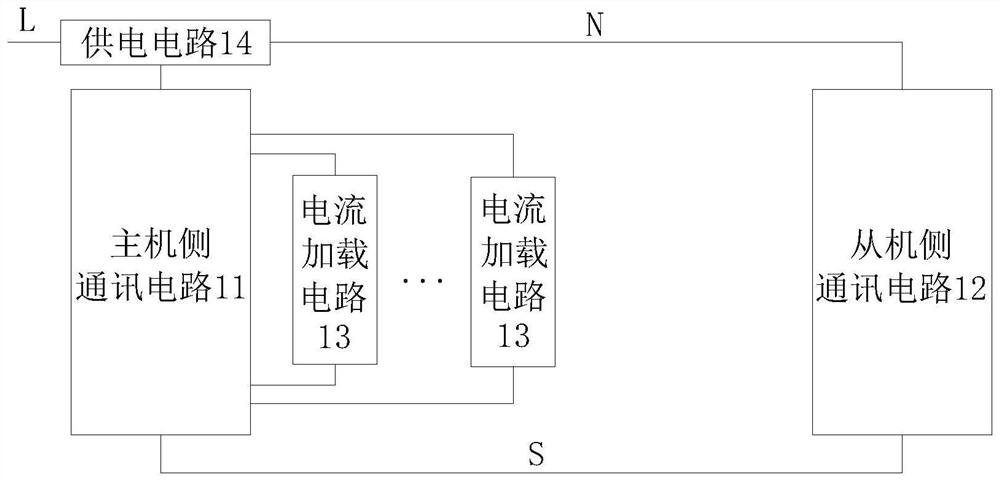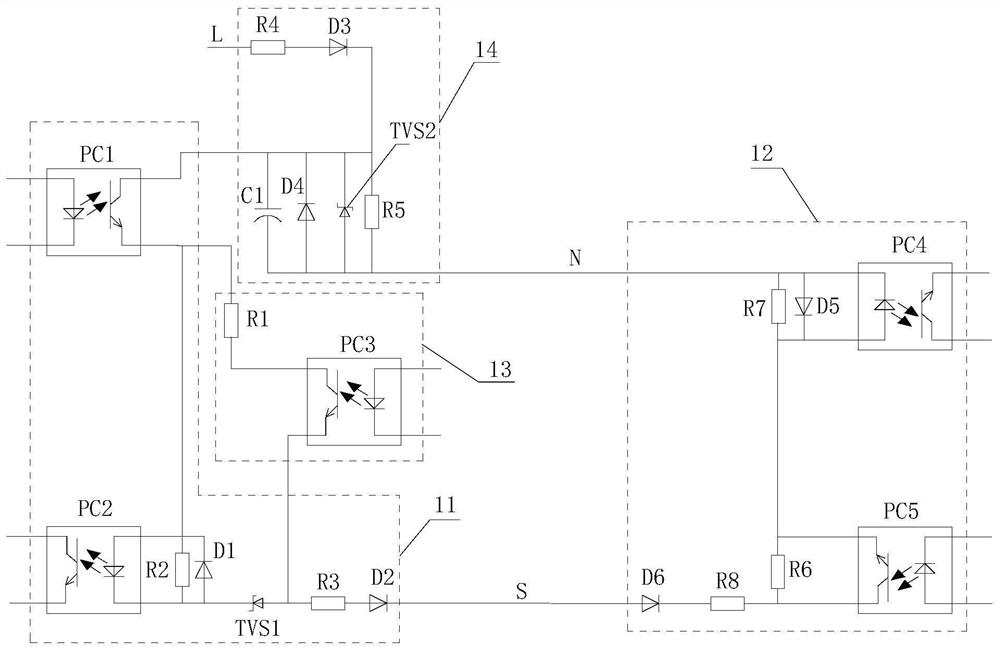Current loop communication circuit and air conditioner
A technology of current loop communication and communication circuit, which is applied in the field of current loop communication, can solve problems such as failure of current loop communication, and achieve the effect of resisting the interference of increased coupling capacitance and stabilizing current loop communication
- Summary
- Abstract
- Description
- Claims
- Application Information
AI Technical Summary
Problems solved by technology
Method used
Image
Examples
Embodiment Construction
[0039] In order to make the purpose, technical solution and advantages of the present application clearer, the technical solution of the present application will be described in detail below. Apparently, the described embodiments are only some of the embodiments of this application, not all of them. Based on the embodiments in the present application, all other implementation manners obtained by persons of ordinary skill in the art without creative efforts fall within the protection scope of the present application.
[0040] see figure 1 and figure 2 , figure 1 is a schematic diagram of the principle of a current loop communication circuit shown according to an exemplary embodiment, figure 2 is a specific schematic diagram of a current loop communication circuit shown according to an exemplary embodiment, as shown in figure 1 and figure 2 As shown, the current loop communication circuit includes:
[0041] The host-side communication circuit 11 and the slave-side commu...
PUM
 Login to View More
Login to View More Abstract
Description
Claims
Application Information
 Login to View More
Login to View More - R&D
- Intellectual Property
- Life Sciences
- Materials
- Tech Scout
- Unparalleled Data Quality
- Higher Quality Content
- 60% Fewer Hallucinations
Browse by: Latest US Patents, China's latest patents, Technical Efficacy Thesaurus, Application Domain, Technology Topic, Popular Technical Reports.
© 2025 PatSnap. All rights reserved.Legal|Privacy policy|Modern Slavery Act Transparency Statement|Sitemap|About US| Contact US: help@patsnap.com


